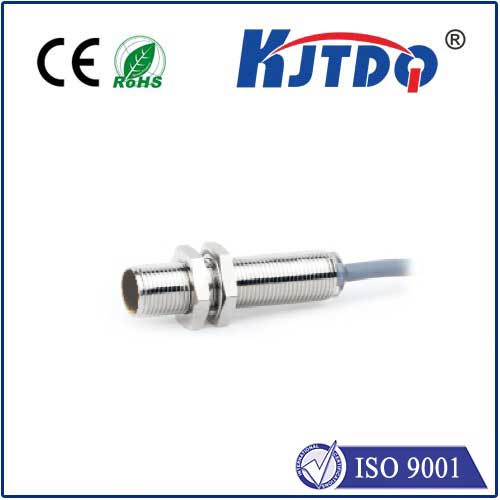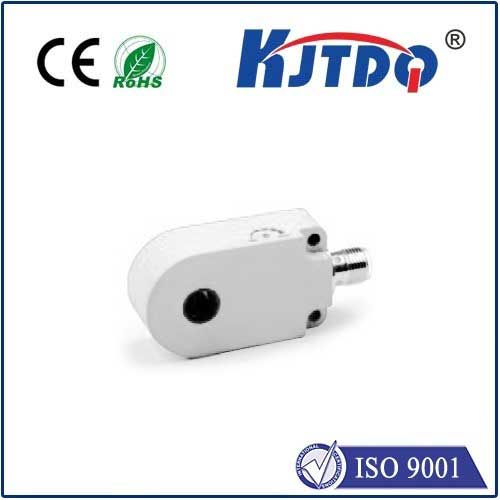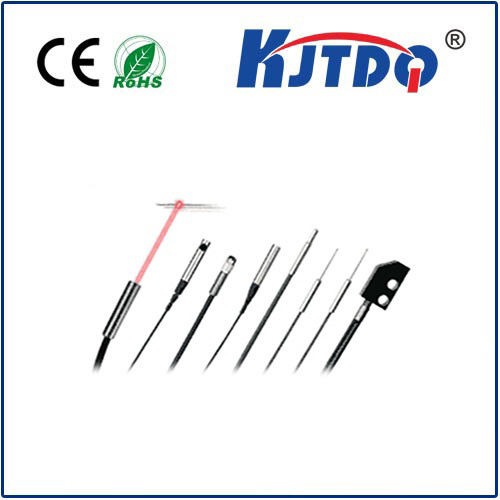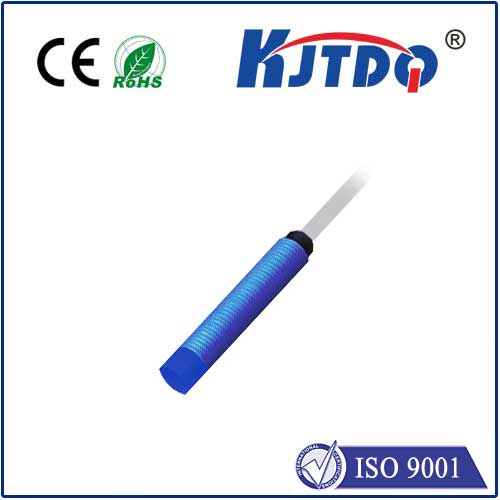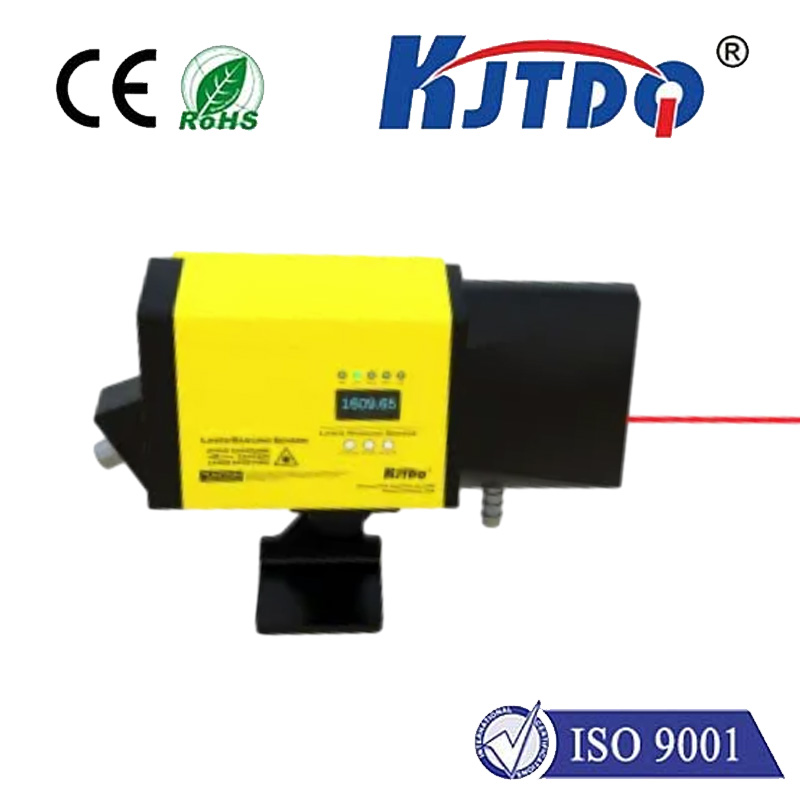E3Z-T86-IL3 diffuse sensor with background suppression
- time:2025-09-28 03:19:07
- Нажмите:0
E3Z-T86-IL3 Diffuse Sensor: Conquer Background Interference in Tough Environments
Imagine a high-speed packaging line where boxes of varying colors and surface textures zip past sensors. On an automotive assembly line, robotic arms place components onto dark or reflective chassis surfaces. In a food processing plant, sensors must detect products on potentially dusty, wet, or vibratory conveyors. A common enemy plagues all these scenarios: background interference. Standard diffuse sensors might falsely trigger on conveyor belts, machine parts, or reflections behind the target object, causing costly errors, jams, and downtime. This is where the precision of background suppression (BGS) technology, exemplified by the Omron E3Z-T86-IL3 diffuse photoelectric sensor, becomes mission-critical.
Beyond Standard Diffuse: The Magic of Background Supposition
Standard diffuse sensors work on a simple principle: they emit light (typically infrared or visible red) and detect the amount reflected back by an object within their range. The closer or more reflective the object, the stronger the signal. However, this simplicity is also its Achilles’ heel. Anything reflective behind the target object – a shiny conveyor belt, a metal machine part, or even a stray reflection – can bounce enough light back to trick the sensor into thinking a target is present.
Background Suppression tackles this head-on. Instead of naively measuring total reflected light intensity, BGS sensors like the E3Z-T86-IL3 employ a sophisticated triangulation principle:

- Dual Receiver Elements: The sensor contains two carefully positioned light-receiving elements (photodiodes).
- Triangulation Calculation: Light emitted from the sensor’s LED strikes an object. The reflected light hits the two receiver elements at slightly different angles.
- Distance Determination: The sensor’s internal circuitry compares the ratio or difference in the light intensity striking these two receivers. This ratio directly correlates to the distance of the object causing the reflection.
- Intelligent Suppression: The user sets a precise sensing distance threshold. The sensor only outputs a detection signal if the calculated distance falls within this set range. Light reflected from objects beyond this set distance (the “background”) is effectively ignored, no matter how reflective it is.
Why the E3Z-T86-IL3 Stands Out: Engineered for Reliability
The Omron E3Z-T86-IL3 isn’t just a generic BGS sensor; it’s a specialized tool designed for demanding industrial applications. Key features make it a robust solution:
- Unmatched Background Suppression Performance: Its core strength lies in its ability to reliably detect targets only within the user-defined sensing range, consistently ignoring high-reflectivity backgrounds like stainless steel belts or machinery parts positioned further back. This drastically reduces false triggers.
- Exceptional Sensing Range: Offering a generous 100 to 300 mm adjustable sensing distance, it provides flexibility for various application layouts without sacrificing background rejection capability.
- Triple Environmental Resistance (IP67): Built for harsh realities, the E3Z-T86-IL3 boasts an IP67 rating. This means it’s completely protected against dust ingress and can withstand immersion in water up to 1 meter deep for 30 minutes. It shrugs off washdowns, dust storms, and humid conditions common in manufacturing, food processing, and logistics.
- High Stability Against Target Color/Texture: While background suppression inherently helps with target variation, this model is designed for consistent detection across a wide range of target colors and surface finishes – from matte black plastics to shiny metallic objects – reducing the need for constant recalibration.
- Visible Red Light Emission: Using visible red light (as opposed to infrared) provides a significant operational advantage. The visible beam spot makes alignment intuitive and verification straightforward. Technicians can easily see where the sensor is pointing and confirm it’s correctly focused on the target area.
- Robust Metal Housing: Encased in a durable zinc die-cast housing, the sensor offers excellent resistance to physical impact and vibration, ensuring long-term mechanical integrity on fast-moving machinery.
- Reliable Output & Easy Wiring: Equipped with a dependable PNP N.O./N.C. selectable output (3-wire), it integrates seamlessly with standard industrial PLCs and control systems. The pre-wired cable or M8 connector options simplify installation.
- Industry-Leading Reliability: Omron is synonymous with industrial sensor quality. The E3Z series, including the T86-IL3, is renowned for its long operational life and minimal drift, contributing to lower total cost of ownership through reduced maintenance and replacement needs. “Omron sensors consistently deliver,” noted a senior automation engineer, “especially in lines where uptime is non-negotiable. Their 10-year happiness guarantee on parts like this E3Z series speaks volumes.”
Where Precision Background Suppression Makes the Difference: Key Applications
The E3Z-T86-IL3’s blend of background suppression, long range, and ruggedness makes it ideal for scenarios where standard sensors falter:
- Packaging Lines: Detecting boxes, cartons, or bags on shiny metal conveyors without triggering on the conveyor itself. Ensuring precise counting or position verification regardless of package color.
- Перевозка материалов: Verifying the presence of pallets, totes, or products on roller conveyors or automated guided vehicles (AGVs), ignoring the dark floors or supporting structures behind.
- Automotive Manufacturing: Detecting components (dark plastics, metallic parts, rubber) on assembly lines with complex backgrounds or ensuring parts are correctly seated in fixtures.
- Food & Beverage Processing: Detecting bottles, cans, or packaged goods on stainless steel conveyors through potential mist, splashes, or light debris. Ignoring reflections from wet surfaces.
- Logistics & Sorting: Identifying parcels or trays on high-speed sorting systems where background structures are unavoidable.
- Machine Tooling: Precise part presence detection within machine fixtures or during loading/unloading sequences, ignoring surrounding machine elements.
Implementing the E3Z-T86-IL3 Effectively
Maximizing the benefit requires proper setup:
- Precise Alignment: Ensure the sensor is correctly aligned perpendicular to the target surface. Use the visible red beam for easy visual confirmation.
- Teach-in Calibration (Crucial for BGS): Utilize the teach button on the sensor. Present the actual target object at exactly the desired sensing distance and press the button. This teaches the sensor the distance ratio corresponding to a valid detection. Repeat if the target distance or characteristics change significantly.
- Stable Mounting: Securely mount the sensor to minimize vibration-induced misalignment or signal fluctuation. The robust metal housing facilitates this.
- Consider Environment: While highly resistant (IP67), avoid directing high-pressure water jets directly at seals if possible. Ensure ambient temperature stays within the specified operating range (typically -25°C to +55°C).
The Definitive Choice for Rejecting the Unwanted
In the complex landscape of modern industrial automation, background interference is a persistent challenge that compromises efficiency and quality. The Omron E3Z-T86-IL3 diffuse photoelectric sensor with background suppression provides an engineered solution. By intelligently leveraging triangulation to distinguish target distance, its IP67 dustproof and waterproof ruggedness, visible red beam for effortless setup, and exceptional immunity to varying target surfaces, this sensor delivers unmatched reliability precisely where standard sensors fail. When you need to detect an object only at a specific location and ignore everything behind it, the E3Z-T86-IL3 stands as a proven, robust, and precise tool to keep your processes running smoothly, minimizing costly errors and maximizing productivity.

